Alaska’s coastline stretches over 6,640 miles, exceeding the combined coastlines of all other U.S. states. This vast maritime frontier creates one of Earth’s most dynamic interfaces between land and sea, supporting an extraordinary tapestry of wildlife adapted to survive in challenging conditions. From the temperate rainforests of the Southeast to the Arctic shores of the North Slope, Alaska’s coastal ecosystems showcase nature’s remarkable resilience and diversity. The unique convergence of geographic, climatic, and oceanographic factors has produced wildlife communities found nowhere else on the planet, making Alaska’s coastal regions among the most biologically productive and ecologically significant habitats in the world.
The Convergence of Powerful Ocean Currents

Alaska’s coastal waters are shaped by the convergence of major ocean currents that create exceptional conditions for marine life. The Alaska Coastal Current, the North Pacific Current, and the Arctic Ocean circulation patterns bring nutrients, regulate temperatures, and influence ecosystem dynamics along different sections of the coast.
Perhaps most significant is the Alaska Coastal Current, which flows counterclockwise around the Gulf of Alaska, transporting nutrient-rich waters and moderating coastal temperatures. This current system, combined with seasonal upwelling events, brings deep-water nutrients to the surface, fueling remarkable biological productivity. The meeting of cold Arctic waters and warmer Pacific currents creates transition zones particularly rich in biodiversity, supporting everything from microscopic plankton to the largest mammals on Earth.
Keystone Species: Sea Otters and Their Ecosystem Impact

Sea otters represent one of Alaska’s most charismatic coastal mammals and serve as a powerful example of a keystone species—an organism that has disproportionate effects on its environment relative to its abundance. Nearly hunted to extinction during the maritime fur trade of the 18th and 19th centuries, sea otters have made a remarkable recovery in parts of Alaska.
Their ecological significance stems from their voracious appetite for sea urchins, which would otherwise overgraze kelp forests. By controlling urchin populations, sea otters protect these underwater forests that provide habitat for countless marine species. Research indicates that areas with healthy sea otter populations support kelp forests with 20 times more biomass than areas without otters. This cascade of ecological effects demonstrates how a single species can fundamentally shape entire coastal ecosystems.
The World’s Largest Concentration of Bald Eagles

Alaska’s coastal regions support the highest concentration of bald eagles in the world, with approximately 30,000 birds—roughly half the entire North American population. The Chilkat Bald Eagle Preserve near Haines hosts the largest gathering of eagles anywhere, with up to 3,000 birds congregating during the late fall salmon runs. Unlike their counterparts in the lower 48 states, Alaskan eagles rarely had to contend with the devastating effects of DDT pesticides that nearly drove the species to extinction elsewhere.
Their abundance along Alaska’s coast is directly linked to the productivity of salmon ecosystems. Eagles time their breeding cycles to coincide with salmon availability, and research shows that eagle reproductive success is significantly higher in years with strong salmon runs. This relationship exemplifies the intricate connections between marine and terrestrial ecosystems that define Alaska’s coastal environments.
Unique Marine Mammal Adaptations to Cold Waters

Alaska’s marine mammals display remarkable physiological and behavioral adaptations to survive in frigid waters. Species like the bowhead whale have evolved the thickest blubber layer of any mammal—up to 20 inches—providing insulation in Arctic waters. This adaptation allows bowheads to break through ice up to 24 inches thick with their massive skulls. Meanwhile, sea otters compensate for their lack of blubber with the densest fur of any mammal—up to one million hairs per square inch—trapping insulating air bubbles against their skin.
Steller sea lions have specialized circulatory systems that retain core heat while allowing extremities to cool, reducing overall energy expenditure. These adaptations showcase the evolutionary responses to Alaska’s demanding coastal environment, where water temperatures can drop below freezing and wind chill factors can reach dangerous levels. Research into these adaptations continues to inform understanding of mammalian physiology and potential applications in human medicine and technology.
Coastal Brown Bears: The Fishing Masters

Alaska’s coastal brown bears represent the largest terrestrial predators in North America and display remarkable fishing behaviors found nowhere else on such a scale. During salmon runs, coastal brown bears congregate in extraordinary numbers at places like McNeil River and Katmai National Park, where a single square mile might host 60 or more bears simultaneously fishing. These bears have developed sophisticated techniques for catching salmon, with some individuals developing specialized hunting strategies passed down through generations.
Research has shown that experienced bears can catch up to 20 large salmon per hour during peak runs. More remarkable still is the relationship between these bears and coastal ecosystems—bears transport salmon carcasses into the forest, sometimes hundreds of meters from streams, effectively fertilizing terrestrial environments with marine-derived nutrients. Studies indicate that up to 25% of the nitrogen in coastal forests comes from salmon carried inland by bears, demonstrating how these massive predators literally connect ocean and forest ecosystems.
The Aleutian Islands: A Unique Biological Crossroads
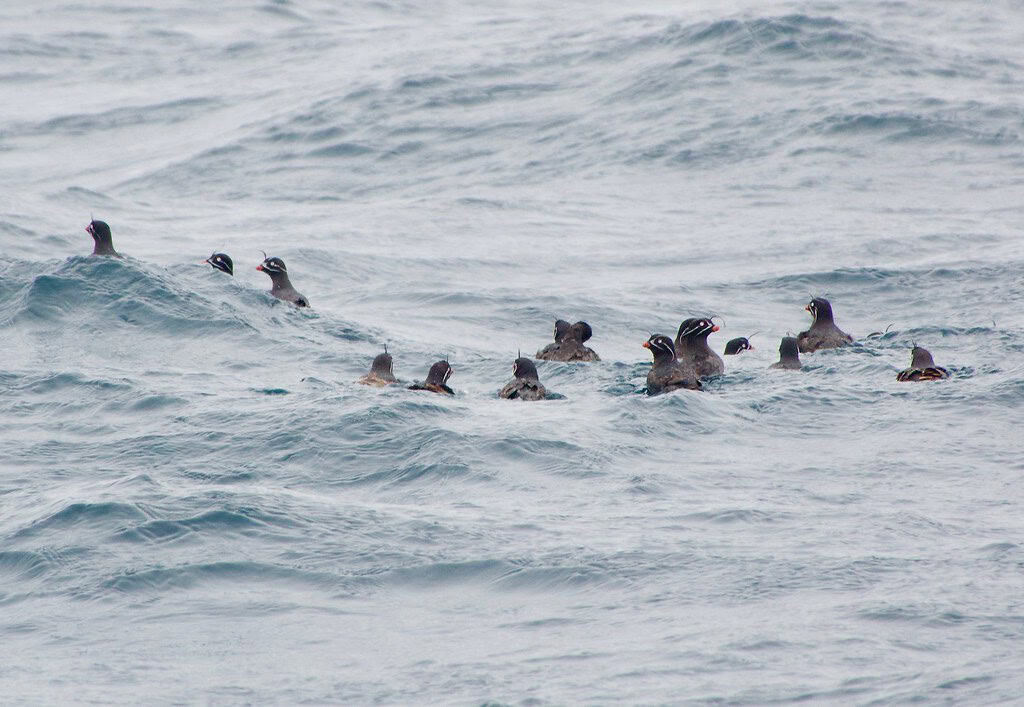
The Aleutian Islands form a 1,200-mile archipelago that serves as a biological bridge between North America and Asia. This remote island chain supports some of the most productive marine ecosystems on Earth and hosts wildlife communities with both Asian and North American influences. The Aleutians contain 40 million seabirds—approximately 80% of all seabirds in North America—nesting in spectacular colonies on isolated cliffs and islands.
Species like the whiskered auklet and red-legged kittiwake breed almost exclusively in this region. The islands sit at the boundary between the North Pacific Ocean and Bering Sea, creating a mixing zone of nutrients and temperatures that supports extraordinary marine biodiversity. Despite harsh weather conditions, including some of the most violent storms in the Northern Hemisphere, the Aleutian ecosystems have developed remarkable resilience. Perhaps most notably, the islands represent an evolutionary laboratory, with numerous endemic species and subspecies having evolved in isolation, including distinct forms of foxes, voles, and ptarmigan found nowhere else on Earth.
Glacier Bay: A Living Laboratory of Succession

Glacier Bay National Park provides a unique window into ecological succession and wildlife colonization following glacial retreat. As recently as 250 years ago, Glacier Bay was entirely covered by ice, but rapid glacial recession has exposed new terrestrial and marine habitats at an unprecedented rate. This natural laboratory allows scientists to observe how coastal ecosystems develop over time. Research shows distinct phases of colonization, with pioneer species like mountain goats, wolves, and harbor seals establishing populations as new habitat becomes available.
Marine ecosystems develop even more rapidly, with productivity increasing exponentially as glacial sediment loads decrease and phytoplankton communities establish. Humpback whales, absent from the bay until the 1960s, now number over 240 individuals during summer feeding seasons. The progressive establishment of species in Glacier Bay demonstrates ecological succession in real-time and provides critical insights into how coastal ecosystems might respond to climate change throughout Alaska and other polar regions.
The Bristol Bay Sockeye Salmon: World’s Largest Run

Bristol Bay hosts the world’s largest sockeye salmon run, with annual returns averaging 40 million fish and reaching as high as 66 million in peak years. This remarkable biological phenomenon represents the most productive and sustainable wild salmon fishery on the planet. The ecological foundations of this system lie in the pristine watershed encompassing nine major river systems and thousands of streams feeding into the bay.
What makes this system truly unique is the genetic diversity within the salmon populations—research has identified over 100 distinct sockeye populations, each adapted to specific spawning locations and timing. This diversity creates a “portfolio effect” that ensures overall run stability even when individual components fluctuate. The Bristol Bay ecosystem supports an extraordinary food web, feeding everything from brown bears to beluga whales. Beyond its ecological significance, this salmon run generates $1.5 billion annually in economic value and supports over 14,000 jobs. The Bristol Bay sockeye represents the gold standard of sustainable fisheries management and illustrates the extraordinary productivity possible when coastal ecosystems remain intact.
Walrus: The Social Engineers of the Arctic Coast
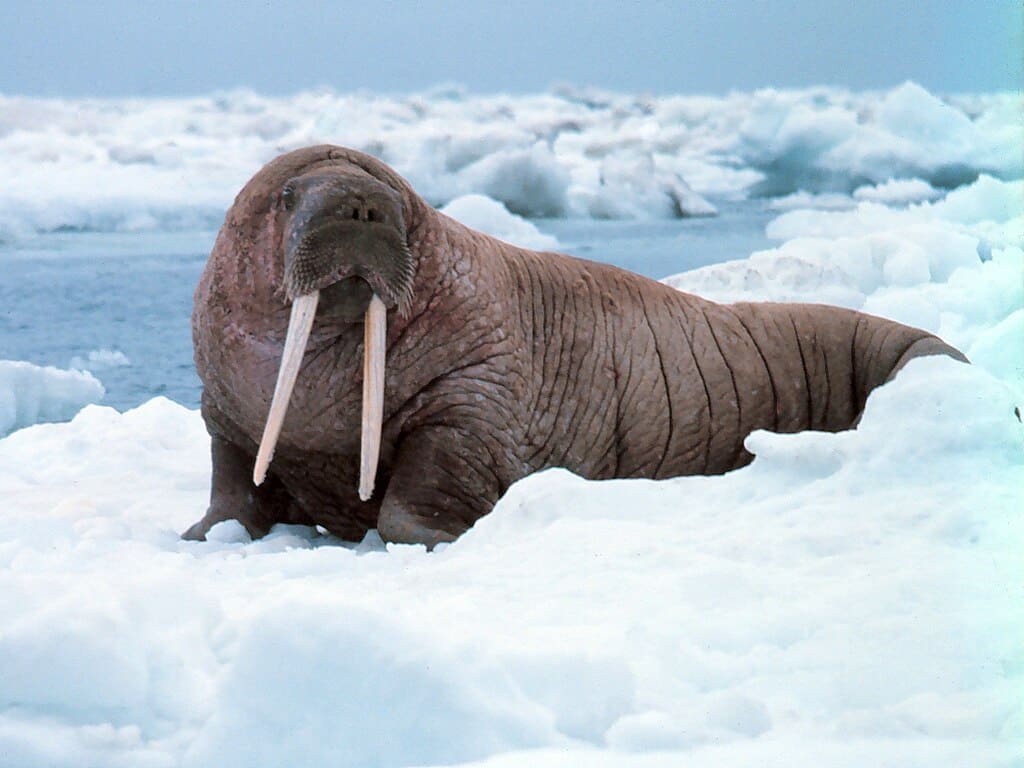
Pacific walruses represent one of Alaska’s most distinctive coastal mammals and play a crucial role as ecosystem engineers in Arctic waters. Congregating in massive herds that can number over 100,000 individuals, walruses use their tusks to dig through seafloor sediments while foraging for clams, worms, and other invertebrates. This feeding behavior, called “bioturbation,” reworks thousands of square kilometers of ocean floor annually, increasing oxygen penetration and nutrient cycling in these sediments.
Research indicates that areas frequented by walruses support significantly higher benthic biodiversity than undisturbed areas. Walruses also create important social structures, with distinct communication patterns and strong maternal bonds that can last several years. Their traditional use of sea ice as resting platforms between feeding bouts has been disrupted by climate change, forcing them to haul out on land in unprecedented numbers—sometimes exceeding 35,000 animals at a single location. These coastal haul-outs create unique disturbance patterns that influence both marine and terrestrial environments along Alaska’s northern and western coasts.
Coastal Rainforests: Where Land and Sea Merge
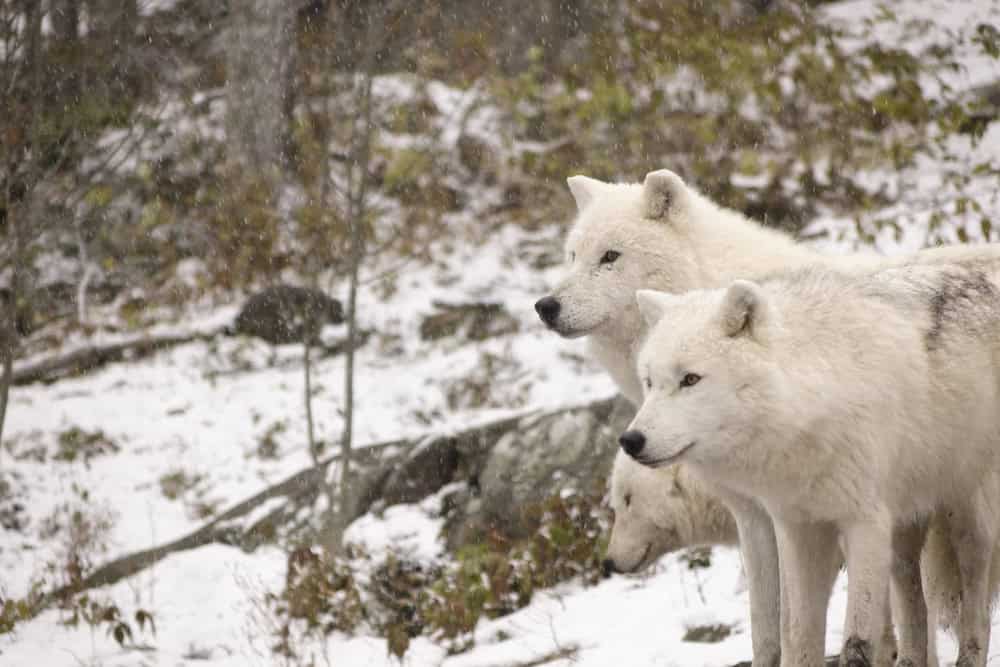
Alaska’s southeastern coast hosts the northernmost extension of the Pacific temperate rainforest, one of the rarest forest types on Earth, covering just 0.3% of the planet’s land surface. This coastal ecosystem receives extraordinary precipitation—up to 200 inches annually in some locations—creating lush forests dominated by massive Sitka spruce, western hemlock, and yellow cedar trees. What makes these forests particularly unique is their intimate connection with marine environments.
Research shows that up to 70% of the nitrogen in these forests comes from marine sources, primarily through salmon carcasses brought inland by bears, wolves, and eagles. The forest, in turn, stabilizes streambanks, provides shade that regulates water temperatures, and contributes fallen logs that create critical salmon spawning habitat. This interdependence creates one of the most productive forest ecosystems on the planet, supporting unique wildlife communities including coastal wolves, Queen Charlotte goshawks, and marbled murrelets—seabirds that nest almost exclusively in old-growth coastal forests. Alaska’s coastal rainforests represent one of the world’s most complete examples of functional connectivity between terrestrial and marine environments.
The Arctic-Beringia Wildlife Corridor
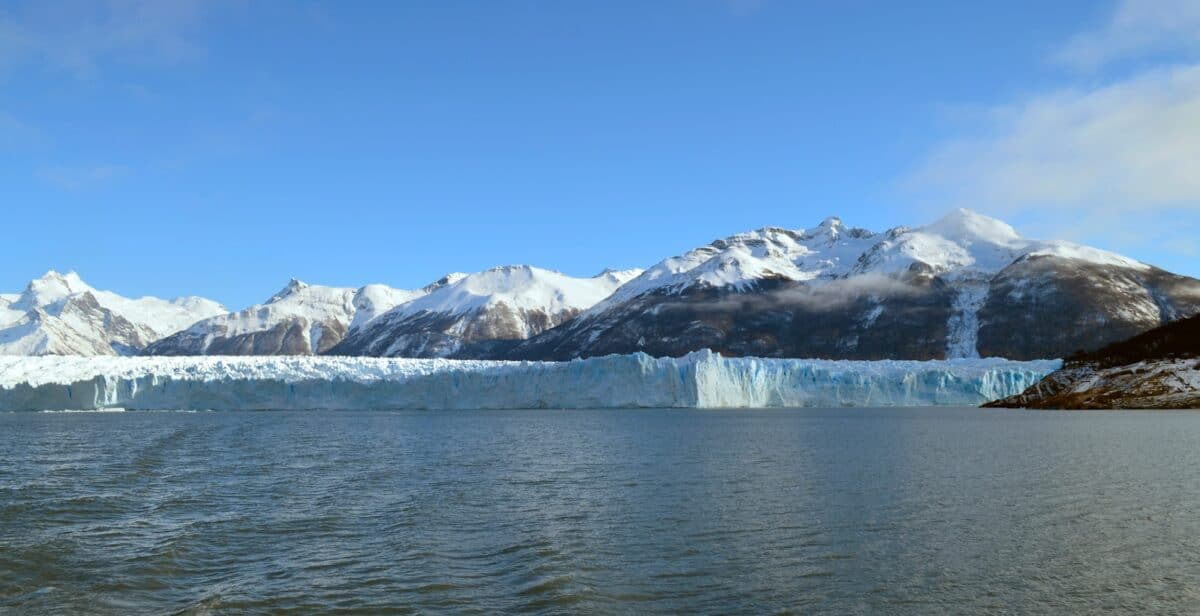
Alaska’s northern and western coasts form part of the ancient Beringia region, which once connected North America and Asia via a land bridge during periods of lower sea levels. Today, though the land connection is submerged, the region continues to function as a crucial wildlife corridor, particularly for migratory species. The area represents the meeting point of four major flyways, with approximately 40 million birds from over 70 species migrating through annually. Species from Asia, including the northern wheatear and yellow-billed loon, regularly cross between continents along this route.
Marine mammals, including bowhead whales, belugas, and ice seals, migrate thousands of kilometers through these waters following seasonal ice patterns. The Arctic-Beringia corridor maintains cultural significance for indigenous communities on both continents, who have relied on these migration patterns for thousands of years. Research using satellite tracking has revealed the extraordinary precision of these migrations, with some birds returning to the exact same nesting territories year after year despite traveling over 20,000 kilometers annually. This biological highway represents one of the planet’s most significant wildlife movement corridors and connects ecosystems across the northern hemisphere.
The Future of Alaska’s Coastal Wildlife: Challenges and Conservation
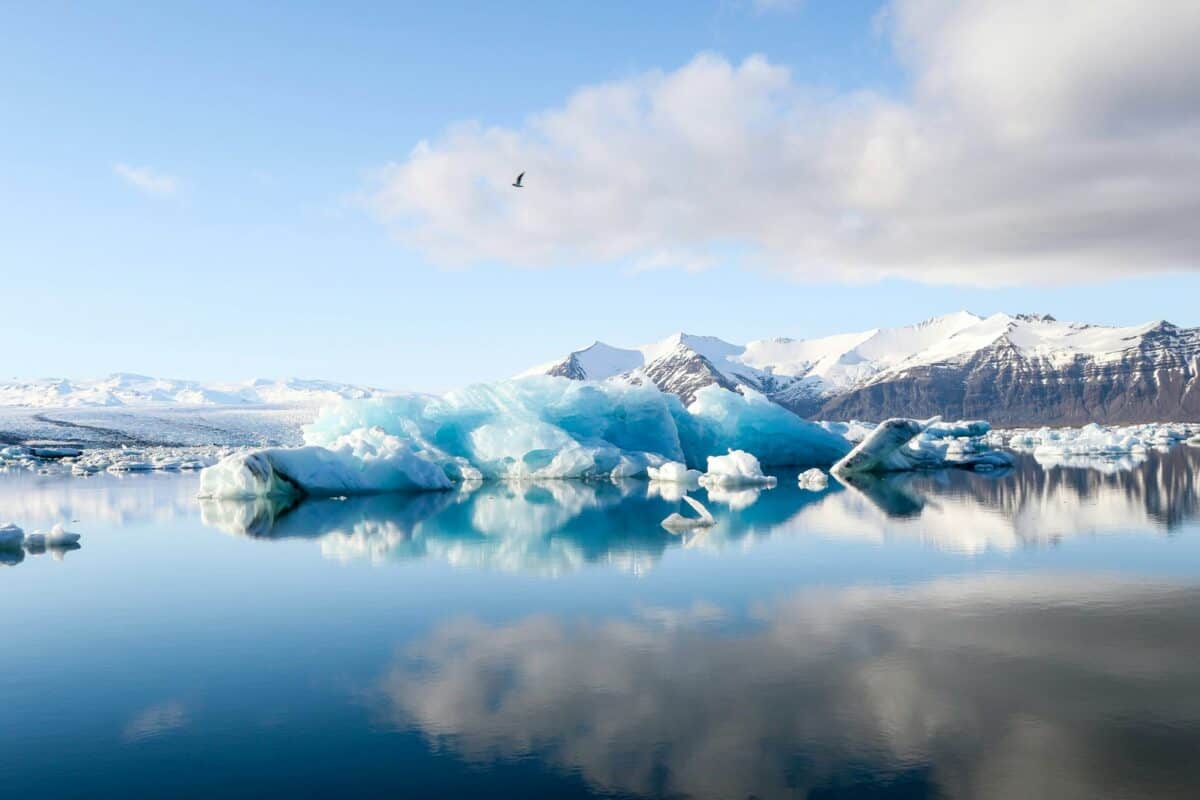
Alaska’s coastal wildlife faces unprecedented challenges as climate change transforms Arctic and subarctic environments at rates exceeding most other regions on Earth. Sea ice is retreating rapidly, with the Bering Sea experiencing record low ice extent in recent years. Ocean acidification is occurring faster in Alaska’s cold waters than in warmer regions, threatening shellfish and other calcifying organisms that form the base of marine food webs. Rising ocean temperatures are shifting species distributions, with southern species moving northward and cold-adapted species losing habitat.
Despite these challenges, Alaska’s coastal ecosystems retain remarkable resilience due to their relative intactness and minimal development compared to more southern coastlines. Conservation efforts focus on maintaining connectivity between protected areas, supporting indigenous co-management systems that incorporate traditional ecological knowledge, and implementing ecosystem-based management approaches. Alaska serves as both a warning system for global change and a living laboratory for effective conservation strategies. The future of these extraordinary coastal wildlife communities depends on our collective ability to address climate challenges while preserving the ecological processes that have sustained these systems for millennia.
Conclusion

Alaska’s coastal wildlife represents one of our planet’s most extraordinary biological treasures, characterized by remarkable adaptations, ecological connections, and productivity unmatched in most other regions. The convergence of geographic, oceanographic, and climatic factors has created wildlife communities that illustrate the intricate relationships between terrestrial and marine environments. From the massive brown bears transporting marine nutrients inland to the microscopic plankton feeding the world’s largest salmon runs, Alaska’s coastal ecosystems demonstrate nature’s remarkable ability to create abundance in even the harshest conditions.
As these systems face accelerating changes, their study becomes increasingly important not just for conservation but for understanding ecological resilience in a changing world. Alaska’s coastal wildlife stands as both inspiration and challenge—showcasing what healthy, functioning ecosystems can achieve while reminding us of our responsibility to protect these irreplaceable natural wonders for future generations.
- How Bison Are Reshaping the American Prairie - August 25, 2025
- Bats as Harbingers of Luck—and Doom—in Global Folklore - August 25, 2025
- Are Wildlife Corridors Really Helping Animals Migrate? - August 25, 2025

